Así es el consumidor de carne avícola en España
Del Do It Yourself al “crítico culinario”, sin renunciar a las tradiciones familiares
¿Qué hay detrás de un buen pollo asado o una ensalada con pavo? ¿Cómo integramos la carne de ave en nuestra dieta? AVIANZA presenta la radiografía de los perfiles más populares entre los consumidores españoles durante el verano: familias, parejas y singles
Agosto 2021. Cada año producimos en España más de 1.7 millones de toneladas de aves, a las que se unen las importaciones de otros países. Solo en los tres meses de verano se consumen más de 120 millones de ejemplares, con el pollo asado o frito como protagonista, junto a los filetes de pavo a la plancha como plato al alza y la recuperación de recetas tradicionales con aves autóctonas, como las codornices.
Detrás de las cifras, con una media de consumo por persona de 14 kg de carne avícola al año, se esconden muchas historias que giran en torno al producto más demandado en nuestro país. Avianza (avianza.org), la Asociación Interprofesional Española de Carne Avícola, ha realizado un estudio online sobre el perfil de los consumidores en nuestro país de este tipo de producto, donde se refleja que elegir un buen producto, cocinarlo, emplatarlo y consumirlo es una de las mayores delicias para cualquier persona, sin importar su edad, su género o su estado civil.
Estas son las principales conclusiones del estudio:
Consumidores en familia: de la tradición a la experimentación saludable
Muchas celebraciones familiares en España van acompañadas de una deliciosa propuesta gastronómica con carnes avícolas autóctonas. Las preferencias de los consumidores giran en torno a la carne de pollo y pavo por su versatilidad, precio y éxito en el menú de la semana. Valoran además la posibilidad de aprovechar todas las partes del producto y se muestran muy receptivas a los consejos de cocinado que encuentran en las redes sociales.
Sus gustos: giran en torno al pollo a la barbacoa o asado, ensalada de pollo o pavo, pollo al curry, pollo frito, frito crujiente o campero, entre otros, con un fuerte vínculo además con las recetas de cocina casera, sobre todo si se combinan con ingredientes habituales en su cesta de la compra.
Se trata de un entorno donde la mujer es la principal compradora (72% vs 28% hombres), y cuenta con el rango de edad más amplio, con un 67% entre los 35 y 54 años. También destaca el 28% de compradores entre 55-64 años, mayores que deben preparar la comida para grandes grupos.
Destacan los fuertes lazos familiares intergeneracionales, la cooperación en la preparación de los platos y la programación de comidas, así como una gran afición a las recetas populares que se caractericen por su sabor y que den solución a la mayoría de las necesidades de los comensales.
Su localización geográfica es más amplia que otros grupos, con presencia en grandes y pequeñas ciudades, localidades y municipios medios.
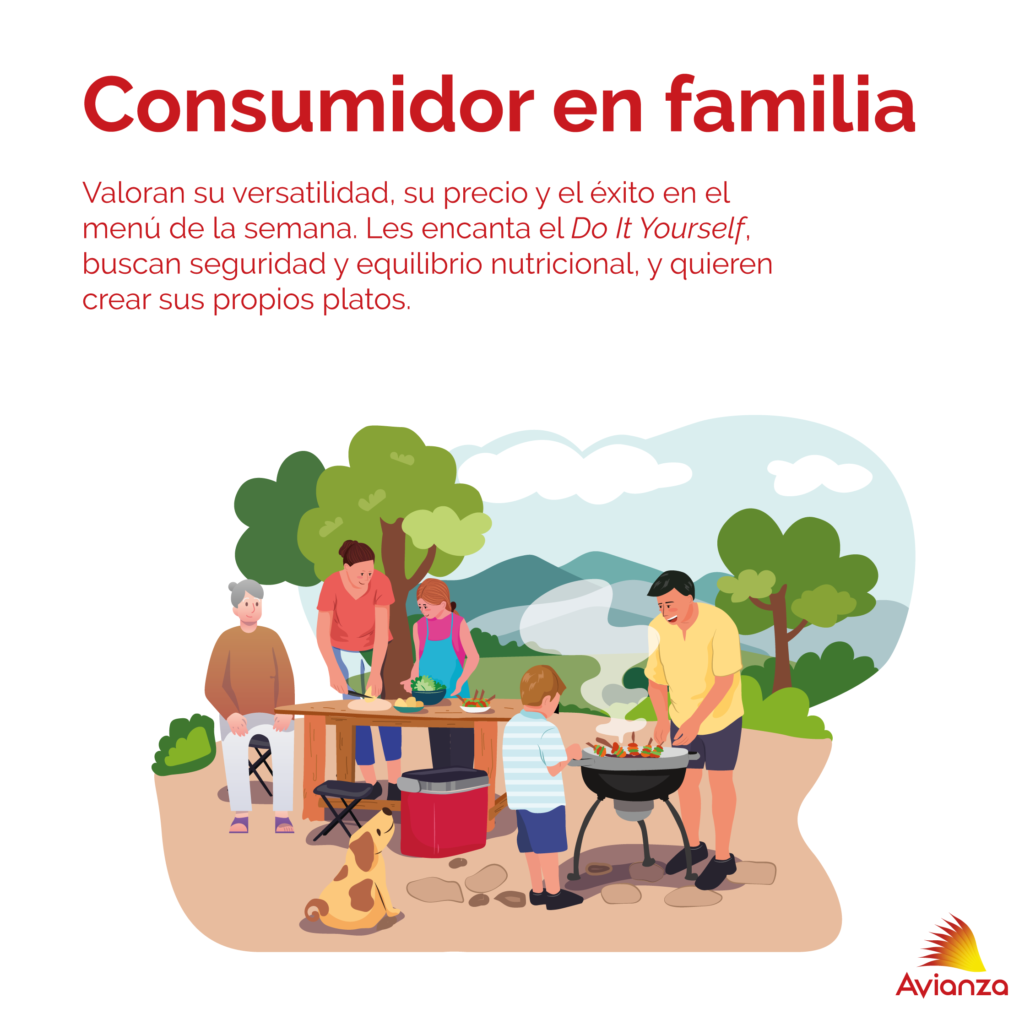
Dentro de las familias, Avianza también ha analizado el perfil de padres con hijos pequeños, con un rango mayoritario de edad entre los 27 y los 44 años, también con un predominio de la mujer (80% vs 20% hombres) como decisora de compra. En este caso, hablamos de una mujer que se autodenomina “moderna”, curiosa, a la que le gusta estar informada, le encanta las propiedades de la carne avícola y no tiene miedo de salir de su área de confort para encontrar información técnica y especializada, sobre todo con el objetivo de ofrecer alimentos saludables a sus hijos pequeños.
Buscan seguridad y equilibrio en la dieta, más allá del producto en sí. Equilibrio nutricional y también entre lo divertido o atractivo para los niños con las recomendaciones que quizás no son tanto de su agrado, pero imprescindibles para su crecimiento. La carne avícola es por tanto una vía creativa para, “con paciencia”, responder a los retos nutricionales. Se aprecia el incremento del pavo en su menú, sobre todo a la plancha o en fiambre.
A este tipo de padres y madres les encanta el DIY (Do It Yourself), con un estilo propio, sin anacronismos e inclusivo. No son madres o padres que quieran competir, aman la diversidad, son multifacéticos, lo saben y lo practican, y son capaces de hacer “magia con el tiempo”.
Este tipo de familias quieren experimentar cosas nuevas, crear platos nuevos con pollo o pavo, e invita a los pequeños a formar parte de la experiencia.
Como compradores, no les van los chollos, desconfían de los bulos y de los eslóganes, y no aceptan que les digan lo que tienen que hacer, comprar o llevarse. Les estimula sacar su propia conclusión. Su declaración de principios es: “no soy un target y mi familia tampoco, no me conoces”.
Consumidores en pareja: “la gastronomía sabe el doble con quien amas”
Denominados “gourmet” o “food lovers” por sus intereses, se definen como foodies. Les apasiona descubrir nuevas propuestas, sobre todo si llevan el sello healthy. Su plato ideal en los momentos románticos suele girar en torno a la carne de ave (pollo, pavo o especies autóctonas como la codorniz) pues le permite combinar el “buen comer” con el bienestar. Al fin y al cabo no hay nada peor que una digestión pesada tras una cena para dos.
En este tipo de perfil de comprador la mujer muestra un rango de edad menor, a partir de los 25 años, mientras que sube a 35 años para ellos. Sin embargo, cada vez más encontramos parejas sin hijos en mayores edades, hasta los 55 años. Destaca el grupo de urbanitas residentes en grandes ciudades, con estudios superiores, a los que les gusta viajar, conocer otras culturas, y disfrutan de un poder adquisitivo medio/alto. Preocupados por la ecología y el cambio climático, innovador en su alimentación, y con interés por la procedencia del producto que consume. El sello carne avícola de España es para ellos una garantía.
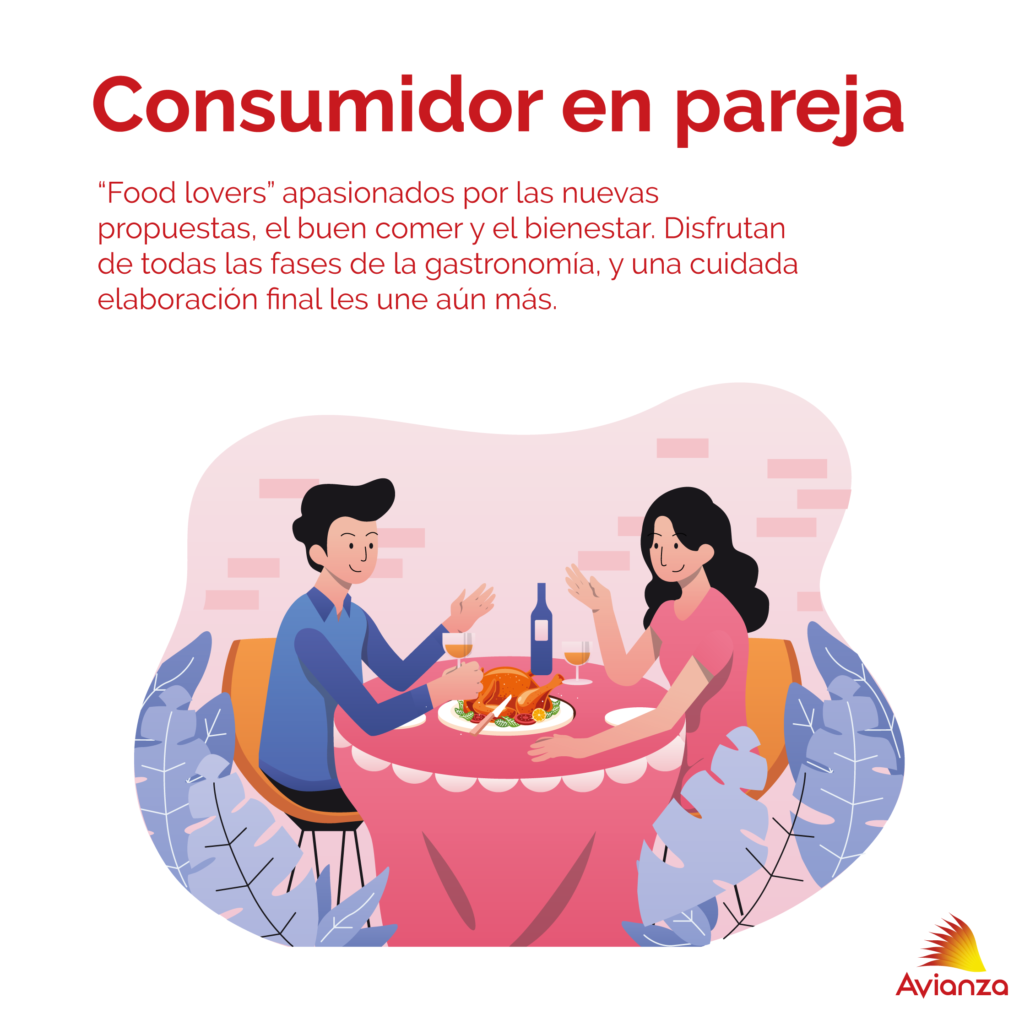
Es el perfil más “masculinizado” de los cuatro analizados por el estudio de Avianza, que no quiere decir que sea mayoritario, pero sí revela que el hombre asume un papel más protagonista en la decisión de compra de carne avícola. Se trata de un hombre aficionado al buen comer, conocedor del producto y cómodo en las cocinas. Vincula directamente la cocina con el bienestar en todas sus fases: desde la preparación del menú para su semana (qué me apetece), el diseño de la ruta por establecimientos para encontrar el producto que busca y tiene en mente, el almacenaje en casa (es un experto en redistribuir el congelador), se preocupa por las preparaciones (adobos, macerados), y respeta y disfruta de los ritmos requeridos para obtener el mejor resultado.
Para este tipo de consumidores el tiempo de cocina es tiempo personal, y no reparan en dedicarlo para ellos y para sus parejas. Por ello disfrutan del emplatado, detalles y los acompañamientos al producto principal. La “gastronomía sabe el doble con la pareja”, declaran. Ver disfrutar a su compañera/o de una elaboración final tan cuidada es parte de lo que les une. Contemplan la cocina como cultura, incluso con como “arte en vivo”. Son consumidores de tradición y sus versiones modernizadas, pero sin alterar valores o principios. Por último, se consideran fanáticos seguidores de lo gourmet en redes sociales y sitios online especializados. Ganan terreno las recetas con especies de aves menos habituales, como capón, pularda, pavita, o codorniz.
Consumidor “Single”: delivery sí, pero sin renunciar a la comida de calidad
El segmento del consumidor que vive solo se ha asociado con intereses en comida para llevar poco nutritiva, pero el consumo de carne avícola es una forma de romper ese concepto. La proliferación de las opciones de delivery o envío a domicilio facilita la incorporación a su menú de platos con ave, que además resisten mejor los desplazamientos y el tiempo de llegada a su hogar.
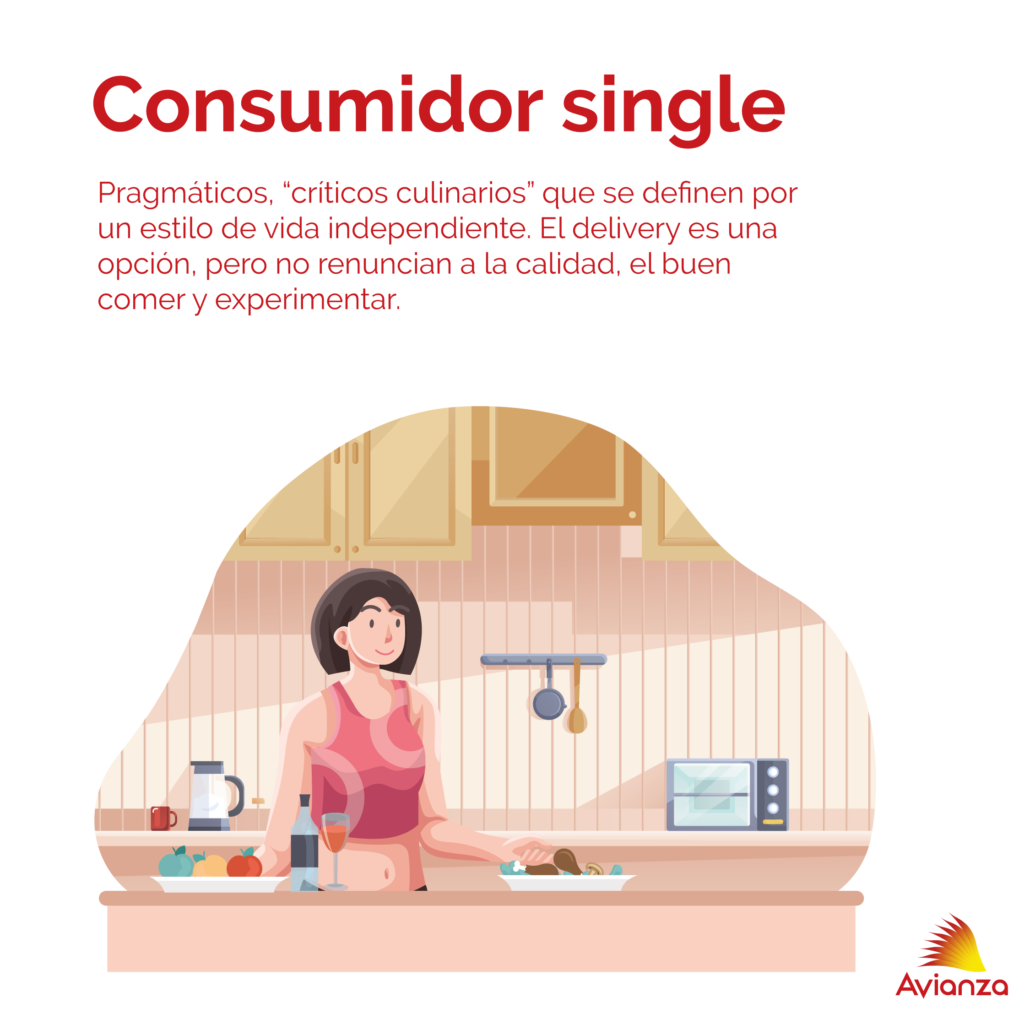
Solteros, estudiantes, personas que teletrabajan en su hogar, no solo hablamos de jóvenes, sino de personas más adultas con una situación que ha pasado a ser de separado o divorciado. La distribución por sexos es paritaria (50%), con mujeres entre los 25 y los 40 años, por hombres entre los 30 y los 45, lo que refleja también una salida de casa más tardía para este segundo segmento.
El consumidor “millennial de pollo” es “appadicto, sociales, críticos y librepensadores”. Les dan mucha importancia a estar cerca de la realidad, y dedican tiempo a la gestión del hogar, la nutrición o el bienestar personal. Son pragmáticos, pura practicidad.
Recurren al servicio de delivery porque no tener tiempo ni ganas de cocinar no está reñido con el buen comer y quedarse satisfechos, más allá de las propuestas de siempre. Quieren probar las novedades de los restaurantes y juegan a ser críticos culinarios.
Su visita al supermercado se orienta a comprar algún corte (bandeja de carne) y los ingredientes adecuados, porque también se sienten preparados para cocinar y sacar incluso una mejor versión. No tienen limitación de presupuesto, pero quieren comprobar cuál es la mejor opción vs delivery. Desconfían de las estrategias de venta basada en campañas meramente comerciales, aunque se animan a participar en concursos si ven claras las bases y supone un reto.
Aman su capacidad de autogestión, sacar partido de su situación “single” y no dejar pasar oportunidades satisfactorias (cine, viaje, spa, aventura, …) para mañana mismo. Siempre acompañados por una buena propuesta gastronómica.

 Avianza
Avianza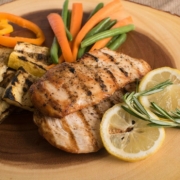 Mark_deyoung
Mark_deyoung  Avianza
Avianza 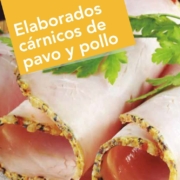
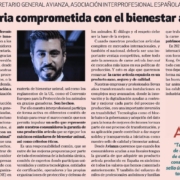
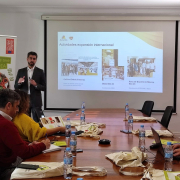
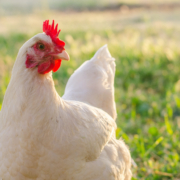
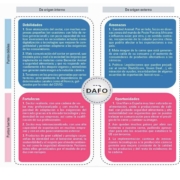 Revista Carnica
Revista Carnica